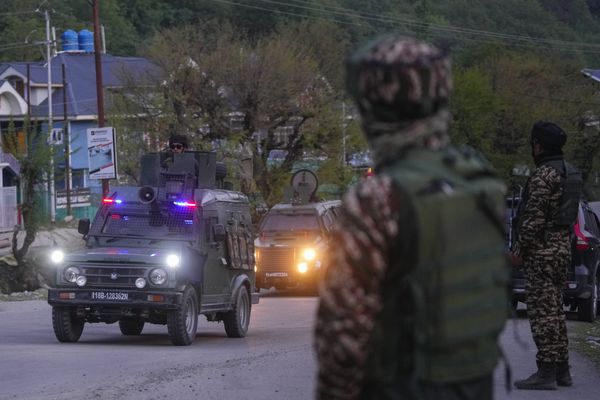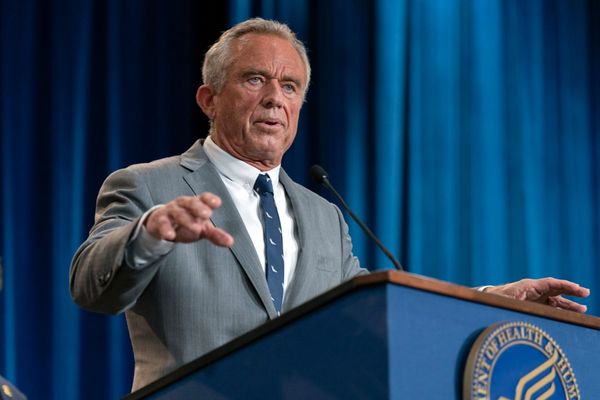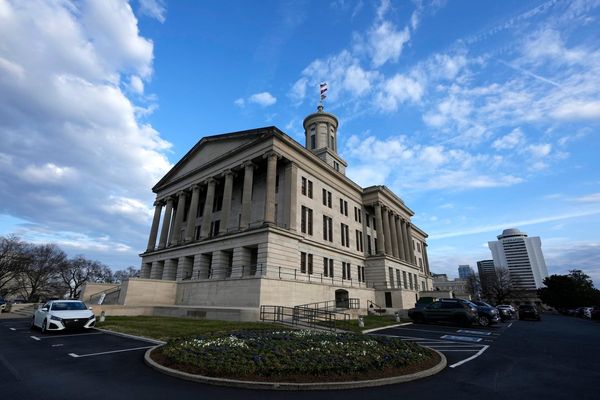Katharine Hayhoe loves talking to her Uber drivers—it’s one way she practices finding common ground on climate change with just about anyone. A Texas Tech professor and accomplished atmospheric scientist, Hayhoe was the lead author on the last three National Climate Assessments and served as a reviewer on the United Nations’ Intergovernmental Panel on Climate Change. But she’s perhaps best known as a science communicator who connects the dots between a warming world and how we live here and now. The science is not that complicated, she says—the fundamentals of how burning oil and gas warms the planet have been well understood since the 1850s. It’s our complicated and contradictory response to this existential threat that keeps her talking to anyone who will have a conversation. The day after accepting the United Nations’ Champions of the Earth award—the organization’s highest environmental honor—Hayhoe spoke with the Observer about how climate change is transforming Texas and what gives her hope.
Texas Observer: You’ve been doing this work for a long time. The science hasn’t changed. Has your message?
Katharine Hayhoe: When I first started to communicate, I committed the classic error that just about every scientist does. I thought I had to give people more facts on how we know the climate is changing, how we know it’s humans, and what the future scenarios tell us at the global scale, because that’s what’s important to us scientists. But we really don’t have a problem with the basic science. [Instead] we don’t think it matters to us. We think the impacts are distant, or only matter to future generations. And we don’t think there’s any constructive solutions.
The biggest and most dangerous myth that the largest number of us have bought into is that the solutions are likely worse than the impacts. Because the solutions, we’re told, are harmful and punitive. They will destroy the economy, they will let China run the world, they will take away my truck. My life will be worse, not better. We don’t think there are solutions we can get on board with, and we don’t think the impacts matter to us. My message has completely changed so that those are the two most important things I focus on.
Most people don’t dispute the basic science of climate change, but they feel powerless to stop it. How do you get people to feel like they have agency?
For the last 10 years or so, the social science has focused on messaging to change people’s minds. You can change people’s minds, but if they don’t feel like they can do anything, then our natural defense mechanism is to disassociate ourselves. What makes people feel empowered to act? It turns out that’s very closely tied to hope. One of the greatest impacts of us taking personal action, whether it’s reducing our carbon footprint, using reusable bags, eating less meat, or taking a careful look at how we travel, is that it gives us hope and it empowers us. It gives us something to talk about with others, and it encourages us to advocate for larger system-wide change, which is what we really need to fix this thing.
You’ve said that the most important thing anyone can do about climate change is to talk about it. But it’s hard to talk about it precisely because it is so alarming. How do we begin that conversation?
Fear is at the root of it on all sides of the political spectrum. That’s why rational hope is the most important thing that we can give each other. We understand how bad the problem is, so we’re not covering our eyes to the fact that it’s really, really bad. But we know that there are solutions, and we know that by acting we can alter our future. I know that, beyond a shadow of a doubt, because that’s what I study. I look at the difference between the future where we wean ourselves off carbon as soon as possible; a midrange future where we dawdle along and reach a collective “oh, shit” moment and take a quick dive; or a future where we keep depending on fossil fuels. And there is a night and day between those scenarios. The difference is not the survival of the planet; the difference is the survival of civilization. Our civilization was not built for the changes that we’re going to see by the end of the century. Our water systems will break. Our infrastructure will fail. Our economy will disintegrate. It’s likely going to mean the end of the political systems and democracies as we know them. That’s what’s really at stake.
How is climate change unfolding across Texas?
If you look at the National Oceanic and Atmospheric Administration map of the billion-dollar climate and weather disasters that have occurred since 1980, Texas is No. 1. We have had more than 106 weather and climate disasters that have caused over $1 billion worth of damage. It’s hard to think of another state that gets ice, snow, blizzards, haboobs, dust storms, tornadoes, hurricanes, hail, drought, floods, heat waves. Our weather is already very naturally variable. What climate change is doing is taking the extremes and stretching them even further. Last August, almost 80 percent of the state was in drought; [then] Central Texas had the wettest fall on record. The weather variability is so strong these days it practically gives us whiplash. Climate change isn’t creating a new problem we’ve never seen. It’s just taking the problems we already have and amplifying them.
You’re a lead author on a recent report that found that so-called 100-year-storms could become annual storms by 2050. How do you talk to coastal communities about their futures?
I think it’s really important to talk to people and hear what they have experienced. Then you can figure out what the priorities are in terms of developing future projections. I’m not the expert in what to do about [those projections]. The city and community organizers are the experts. At least I can give them information, so they can be proactive, rather than waiting for the 500-year flood event, and not knowing how much more frequent they are going to be in the future. It’s sort of like a medical decision. You might be having some worrying symptoms and you go to the doctor and they run a bunch of tests and they tell you, “Yeah, it’s worse than you thought. But if you act now, you’re going to be a lot better off than if you wait until it gets worse.”
What are some things happening in Texas that give you hope?
I love what’s happening in Texas, and I love talking to people about it. The fact that there are cotton producers in West Texas who are really not sure about this whole climate change thing, but they are signing up to get wind turbines on their land because the check arrives in the mail—there is nothing wrong with that. We have Fort Hood, the biggest army base in the country, and they went with wind and solar energy two years ago to save $150 million of taxpayer money. The City of Dallas’ operations are 100-percent clean energy. Why is nobody talking about the fact that Dallas is 100-percent clean energy? DFW is the first carbon-neutral airport in North America. And 19.2 percent of the power on the [statewide] ERCOT grid last year was wind and solar. This is all happening because of the state’s energy policy, not because of our climate policy. Texas’ independence has actually made it more resilient and more forward-thinking in green energy. We are the biggest carbon emitters in the country. But we are also moving to decarbonize as fast as almost any other state. If we can do it, anybody can do it.
This interview has been edited for length and clarity.
Read more from the Observer:
-
I’ve Lived in East Austin for 60 Years, and I Don’t Recognize it Anymore: As gentrification reshapes my neighborhood, I fear we’re losing something of real value to our city.
-
Driving My Life Away: As physicians leave small towns, rural Texans must travel farther and farther for health care.
-
John Cornyn’s Weaselly Immigration Record: How to say one thing and do another.







